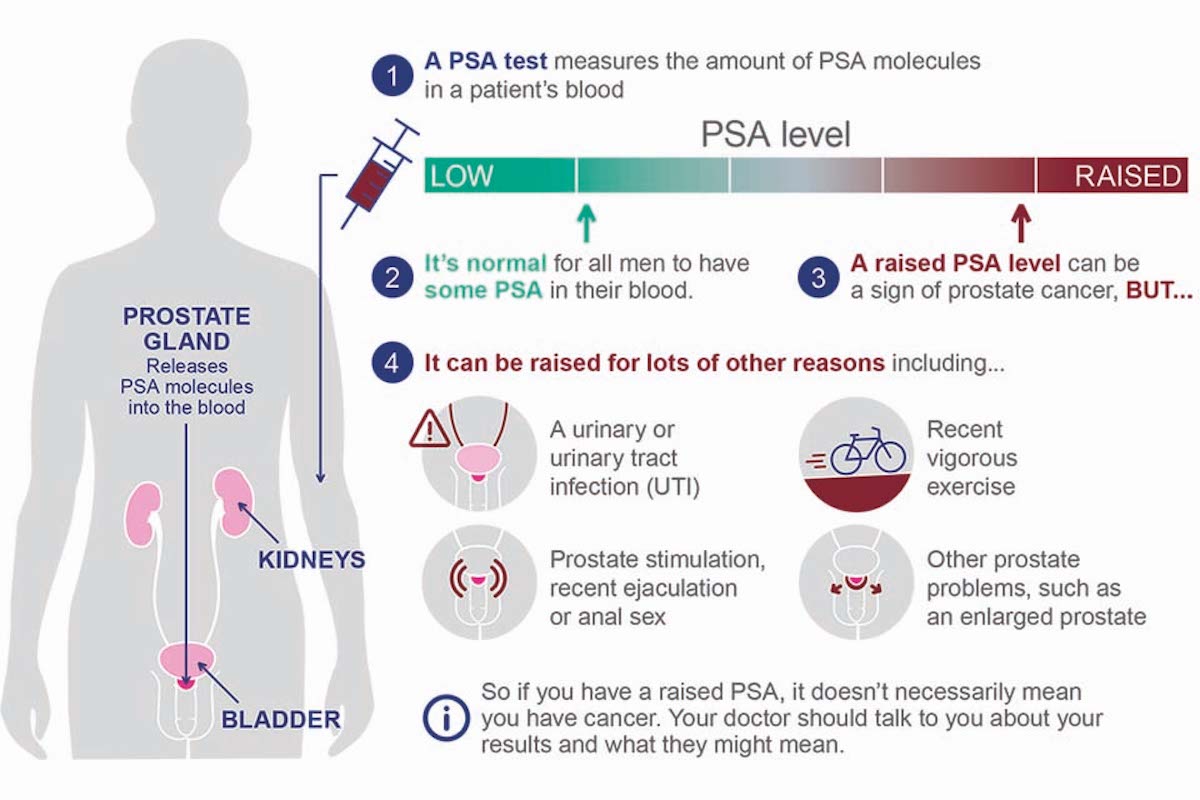When prostate cancer is diagnosed, the professional healthcare provider, often a urologist or oncologist, also tells in which stage the cancer is. This is determined via the TNM staging system, PSA levels, and a Gleason score. There are 4 stages; the first one means the tumor is slowly progressing, the tumor cannot be felt, and the malignant cells almost look healthy. The second stage means the tumor is only found in the prostate gland. Although the cancer is small, all the levels are higher than in the first stage and there is a risk of growing & spreading.

In the third stage, the cancer is growing and is possibly spread through the outer layer of the prostate to nearby lymph nodes, tissue, or organs, such as the bladder or rectum. In the fourth – and last-stage, cancer has spread to more distant lymph nodes, tissue, and organs, such as the lungs, brain, and liver.
Prostate-specific Antigen Blood Test (PSA)
A PSA-level test is one of the first tests a professional healthcare provider will do to see if you’ve prostate cancer. Prostate-specific antigen is a protein made in the prostate gland. This test is taken to see if your prostate-specific antigen, or PSA, levels are elevated. If this is the case, you might have prostate cancer. Healthy PSA levels depend on a person’s age; normal PSA levels of a man should be 4.0 ng/mL – or lower. Note: elevated PSA levels may also indicate prostatitis, or an enlarged prostate, or can be elevated because of recent sexual intercourse or other vigorous exercises. For example cycling.
Gleason score
The most used way to assess how aggressive the cancer cells are is the Gleason score. The range starts from 2 (not aggressive cancer) to 10 (highly aggressive cancer). This score is used to assess cancerous (prostate) biopsies, so when a biopsy is done, researchers will examine it, and scale it from 6 (low-grade prostate cancer), to 7 (medium-grade prostate cancer), to 8-10 (high-grade prostate cancer). Continue reading on the next page, and discover how you can recognize this type of cancer.

